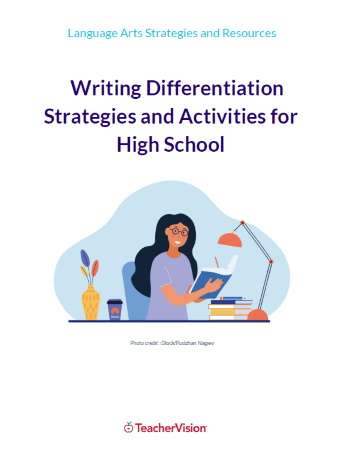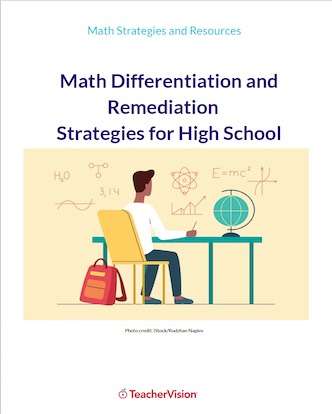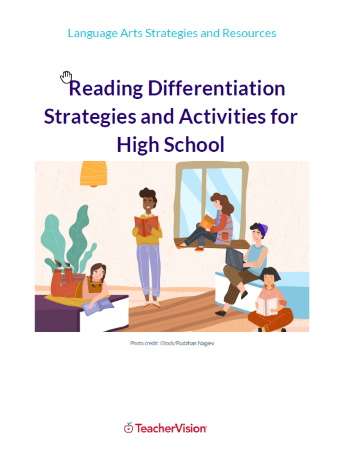Effective behavior management for inclusive classrooms
Managing disruptive behavior is examined in detail. The teaching teaching methods and strategies discussed in this article focus on behavior management in an inclusive classroom.Looking for more inclusive classroom and special needs resources? You can find them in our special needs center.
Determining which behavior-reduction methods to use with students with disabilities is not as difficult as you may think. As mentioned previously, the behavioral interventions typically used with students without disabilities can also be used with students with disabilities – with a few exceptions. Yell and Shriner (1997) provided a comprehensive account of major issues effecting the discipline of students with disabilities addressed in Section 615 K of P.L. 105-17 (the IDEA Amendments of 1997):
- Disciplinary procedures.
- Behavior-intervention plans.
- Manifestation determination. "Manifestation determination" refers to a review process (conducted by the student's IEP team and other qualified personnel) to determine the relationship between a student's disability and misconduct. This review process is conducted when school officials seek a change of placement, suspension, or expulsion for more than 10 school days.
- Interim, alternative educational settings.
- The "stay put" provision.
- IDEA protection for students not yet eligible for special education.
- Referral to law enforcement and judicial authorities. When applying behavior-reduction techniques, use a common sense approach and be reasonable in your application.
- Regardless of the behavioral infraction, before you discipline any student with disabilities, you should talk to administrative officials (e.g., principal, special education supervisors, school attorney) about the rules, policies, regulations, and procedural safeguards outlined in the IDEA Amendments of 1997 that govern the discipline of students with disabilities.
Question 9. How do I use reinforcement strategies to reduce disruptive behavior?
Teachers can use many types of reinforcers to teach desirable behavior. Madsen and Madsen (1983) identified five categories of responses available for teaching desired behavior: the use of words, physical expressions, physical closeness, activities, and things used as rewards or positive feedback (see box, "Positive Feedback"). Remember that the effectiveness of such reinforcers is contingent on continuous, systematic use across time. Also, consider the appropriateness of each response for your individual students. Other reinforcement-based intervention strategies may also be effective: differential reinforcement of low rates of responding (DRL); differential reinforcement of other behavior(s) (DRO), also referred to as differential reinforcement of zero responding; differential reinforcement of incompatible behavior (DRI); and differential reinforcement of alternative behavior(s) (DRA). Many teachers have found such strategies effective in developing alternative response behavior to inappropriate, disruptive, or undesirable behavior. Even though these procedural alternatives use a positive (reinforcement) approach to behavior reduction, teachers have found both advantages and disadvantages in the use of such procedures. In deciding whether to use differential reinforcement procedures, you should review the works of Alberto and Troutman (1995) and Schloss and Smith (1994).
Question 10. Is it appropriate for me to use punishment?
Punishment, the most controversial aversive behavior management procedure, has been used and abused with students with disabilities (Braaten, Simpson, Rosell, & Reilly, 1988). Because of its abuse, the use of punishment as a behavioral change procedure continues to raise a number of concerns regarding legal and ethical ramifications. Although punishment is effective in suppressing unacceptable behavior, it does have some limitations:
- The reduction in disruptive behavior may not be pervasive across all settings.
- The effect may not be persistent over an extended period of time.
- The learner may not acquire skills that replace the disruptive behavior (Schloss, 1987).
- Response cost.
- Time out.
- Overcorrection.
- Contingent exercise.
- Aversive conditioning (Braaten et al., 1988; Cuenin & Harris, 1986).
- Punishment should be used discriminately, rather than routinely.
- It should be combined with positive procedures.
- Punishment should be used only in response to repeated misbehavior for students who persist in the same kinds of misbehavior.
- It should be employed consciously and deliberately as a part of a planned response to repeated misbehavior.
- Punishment should be used only when students are not responsive to reward-based interventions or praise/ignore strategies (Larrivee, 1992).
- Punishment should be used only as a "treatment of last resort" (Larrivee), and only after you have taken appropriate steps to ensure that the due process rights of students will not be violated and that the procedures will not cause psychological or emotional harm to the student.
Final Thoughts
There is no "one plan fits all" for determining how teachers should respond to the disruptive behavior of students with disabilities in inclusion settings. An initial starting point would include establishing classroom rules, defining classroom limits, setting expectations, clarifying responsibilities, and developing a meaningful and functional curriculum in which all students can receive learning experiences that can be differentiated, individualized, and integrated. Many publications describe effective classroom-based disciplinary strategies (Carter, 1993; Schloss, 1987), but few (Ayres & Meyer, 1992; Carpenter & McKee-Higgins, 1996; Meyer & Henry, 1993; Murdick & Petch-Hogan, 1996) address effective classroom-based disciplinary strategies for students with disabilities in inclusion settings. Classroom teachers can use a variety of strategies to discipline students with disabilities in inclusion settings. The approaches most likely to be successful combine humanistic and cognitive behavioral attributes and take into consideration the teacher's diagnostic-reflective thinking and choice-making skills regarding the following:
- Student's behavior.
- Student's disability.
- Curriculum.
- Instructional program.
- Classroom environment.
- Due process rights.
References
Alberto, P. A., & Troutman, A. C. (1995). Applied behavior analysis for teachers. (4th ed.). Englewood Cliffs, NJ: Prentice-Hall.
Ayers, B., & Meyer, L. H. (1992). Helping teachers manage the inclusive classroom: Staff development and teaming star among management strategies. The School Administrator, 49(2), 30-37.
Braaten, S., Simpson, R., Rosell, J., & Reilly, T. (1988). Using punishment with exceptional children: A dilemma for educators. TEACHING Exceptional Children, 20(2), 79-81.
Carpenter, S. L., & McKee-Higgins, E. (1996). Behavior management in inclusive classrooms. Remedial and Special Education, 17(4), 195-203.
Carter, J. F. (1993). Self-management: Education's ultimate goal. TEACHING Exceptional Children, 25(3), 28-32.
Charles, C. M. (1996). Building classroom discipline (5th ed.). New York: Longman. Cuenin, L. H., & Harris, K. R. (1986). Planning, implementing, and evaluating timeout interventions with exceptional students. TEACHING Exceptional Children, 18(4), 272-276.
Dunlap, L. K., Dunlap, G., Koegel, L. K., & Koegel, R. L. (1991). Using self-monitoring to increase independence. TEACHING Exceptional Children, 23(3), 17-22.
Dunlap, G., Kern, L., dePerczel, M., Clarke, S., Wilson, D., Childs, K. E., White, R., & Falk, G. D. (1993). Functional analysis of classroom variables for students with emotional and behavioral disorders. Behavioral Disorders, 18(4), 275-291.
Evans, S. S., Evans, W. H., & Gable, R. A. (1989). An ecological survey of student behavior. TEACHING Exceptional Children, 21(4), 12-15.
Frith, G. H., & Armstrong, S. W. (1986). Self-monitoring for behavior disordered students. TEACHING Exceptional Children, 18(2), 144-148.
Foster-Johnson, L., & Dunlap, G. (1993). Using functional assessment to develop effective individualized interventions for challenging behaviors. TEACHING Exceptional Children, 25(3), 44-50.
Fuchs, D., Fernstrom, P., Scott, S., Fuchs, L., & Vandermeer, L. (1994). Classroom ecological inventory: A process for mainstreaming. TEACHING Exceptional Children, 26(3), 11-15.
Hughes, C. A., Ruhl, K. L., & Peterson, S. K. (1988). Teaching self-management skills. TEACHING Exceptional Children, 20(2), 70-72.
Katsiyannis, A. (1995). Disciplining students with disabilities: What principals should know. NASSP Bulletin, 79(575), 92-96.
Kounin, J. S. (1970). Discipline and group management in classrooms. New York: Holt, Rinehart & Winston.
Larrivee, B. (1992). Strategies for effective classroom management: Creating a collaborative climate (Leader's Guide to Facilitate Learning Experiences). Boston: Allyn & Bacon.
Madsen, C. H., Jr., & Madsen C. K. (1983). Teaching/discipline: A positive approach for educational development (3rd ed.). Raleigh, NC: Contemporary Publishing Company.
McCarl, J. J., Svobodny, L., & Beare, P. L. (1991). Self-recording in a classroom for students with mild to moderate mental handicaps: Effects on productivity and on-task behavior. Education and Training in Mental Retardation, 26(1), 79-88.
Meyer, L. H., & Henry, L. A. (1993). Cooperative classroom management: Student needs and fairness in the regular classroom. In J. Putnam (Ed.), Cooperative learning and strategies for inclusion: Celebrating diversity in the classroom (pp. 93-121). Baltimore: Paul H. Brookes.
Moyer, J. R., & Dardig, J. C. (1978). Practical task analysis for special educators. Teaching Exceptional Children, 11(1), 16-18.
Murdick, N. L., & Petch-Hogan, B. (1996). Inclusive classroom management: Using preintervention strategies, Intervention in School and Clinic, 13(3), 172-196. National Center on Educational Restructuring and Inclusion. (1994). National study of inclusive education. New York: Author. (ERIC Document Reproduction Service No. ED 375 606)
Nelson, J. R., Smith, D. J., Young, R. K., & Dodd, J. M. (1991). A review of self-management outcome research conducted with students who exhibit behavioral disorders. Behavioral Disorders, 16(13), 169-179.
Prater, M. E., Joy, R., Chilman, B., Temple, J., & Miller, S. R. (1991). Self-monitoring of on-task behavior by adolescents with learning disabilities. Learning Disability Quarterly, 14(13), 164-177.
Rosenbaum, M. S., & Drabman, R. S. (1979). Self-control training in the classroom: A review and critique. Journal of Applied Behavior Analysis, 12(3), 467-485.
Schloss, P. J. (1987). Self-management strategies for adolescents entering the work force. TEACHING Exceptional Children, 19(4), 39-43.
Schloss, P. J., & Smith, M. A. (1994). Applied behavior analysis in the classroom. Boston: Allyn & Bacon.
Sorenson, G. P. (1990). Special education discipline in the 1990s. West's Educational Law Reporter, 62(2), 387-398.
U.S. Department of Education. (1996). 18th annual report to Congress on the implementation of the Individuals with Disabilities Education Act. Washington, DC: Office of Special Education. (ERIC Document Reproduction Service No. ED 400 673)
Yell, M. L. (1990). The use of corporal punishment, suspension, expulsion, and timeout with behaviorally disordered students in public schools: Legal considerations. Behavioral Disorders, 15(2), 100-109.
Yell, M. L., & Shriner, J. G. (1997). The IDEA Amendments of 1997: Implications for special and general education teachers, administrators, and teacher trainers. Focus on Exceptional Children, 30(1), 1-19.
Vera I. Daniels (CEC Chapter #386), Professor, Institute for the Study and Rehabilitation of Exceptional Children and Youth, and Department of Special Education, Southern University and A&M College, Baton Rouge, Louisiana.










